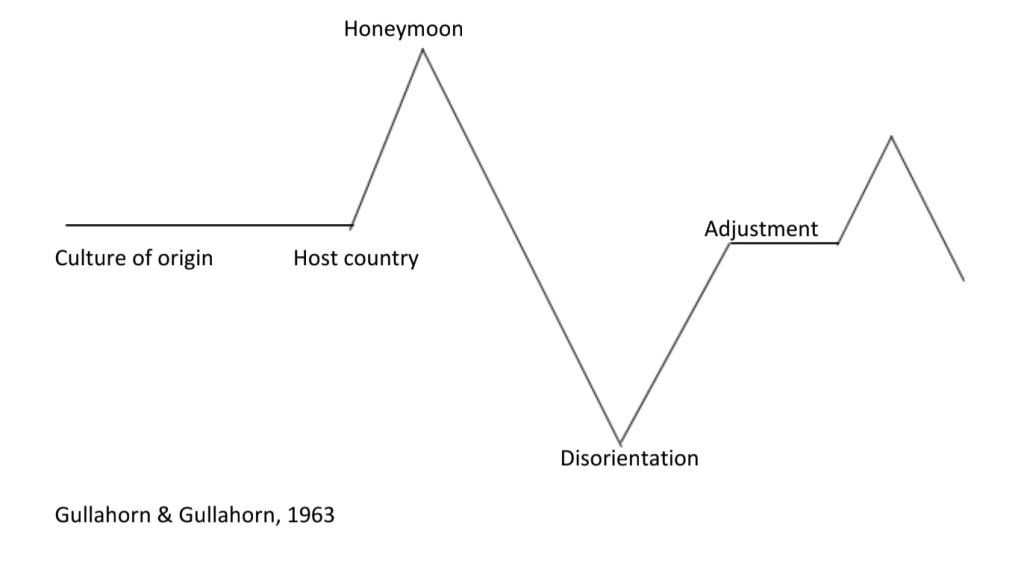
-Communication-
When you look at any handbook for top priorities in handling a crisis in a school community, the number one priority is to set up clear communication from the head of school to the community.
We are fortunate at my school that our head of school, division principals, and communications team are on top of letting the community know the latest information about virtual school and where things stand with the hopeful reopening. They provide information from the government, strategies to support children studying at home, and health information while also offering reassurance that we are all working together for the benefit of our students and parents.
Our head of school communicates via email and videos. Her videos are especially helpful in making a personal connection while providing a visual image of her leadership in action. What pops into my head as a history teacher/wellness coach is the voice of President Roosevelt doing his fireside chats. President Roosevelt communicated during the crisis of World War II to bring encouragement, stability, and hope into the lives of the citizens.
With no end in sight for our virtual school and terrible news coming from Europe and North America, I definitely see the need to have our head of school and other leaders provide some sort of fireside chats to our community. We can ask the parents to send in their questions to guide the content of the talks.
Another type of communication in the case of a public health crisis is education for both mental and physical health which we combine under the PERMAH wellness construct. In the case of my school, the nurse and I take turns posting articles, write-ups, and tips to support the well-being of our staff. We have not opened up the wellness blog to our parents so I hope we can find some way to share needed information with them as well as our students. Something as basic as creating and sharing a video on hand washing which the nurse and I did back at HKIS during SARS is just one way to provide health information to the community.
-Hitting the Pause Button-
While we are fortunate in Vietnam to have limited cases of the coronavirus, we are now in week six of virtual school. Fatigue is setting in for some so it is definitely time to pause, reflect, consolidate and re-calibrate what we are doing and how we will go forward. We are entering a new phase of virtual school with Europe and North America now being engulfed by the spreading wave of the coronavirus.
A few guiding questions for this reflection process could be:
- What aspects of our efforts are really working well for our student learners? Our parent and nanny facilitators?
- Which delivery strategies have the greatest return on investment of time and energy with our efforts?
- Which is offering the lowest return?
- Are we using technology to meet our pedagogical needs or are we adapting our pedagogy to the tools?
- Where are our staff, students, and parents regarding their stamina and endurance for the possibility of extended virtual school?
- We started off with a sprint and we are now in a marathon. Have we adapted? Do we need any course corrections?
- How intentional are we in making wellness a priority for our community?
- How are our actions supporting our desire for our collective well-being?
- What could happen next in Vietnam and in the world that we need to have contingency plans ready for?
One observation for me is that boy howdy we have an incredibly talented and driven group of educators at my school. They dove into the shift from regular to virtual school with a passion to serve their students and their parents. I previously wrote about how I saw several of the PERMAH pillars in action during virtual school at HKIS during SARS. I see the same positive benefits today seventeen later. The wellness benefit of the PERMAH “A for Accomplishment” really stood out back at HKIS and it is the same today.
One big difference between the HKIS virtual school and my current school is that we ran for a month in Hong Kong and now we are in week six not knowing how much longer we will be doing online learning. With no clear end of virtual school in sight, we find ourselves working hard and definitely accomplishing a great deal. But my observation is that we cannot continue to pound away at achievements as a source of energy to support our well-being.
The staff at my school has been pushing forward using lots of energy to the point that it seems like our collective energy reserves are running low. Our normal recharging through face-to-face teaching is obviously missing and we need to acknowledge this. As we pause and reflect on how we are doing virtual school, I come back to my previous posts and article on the importance of supporting the social-emotional needs of the community. A big lesson learned from HKIS is that the longer virtual school lasted, the more the social and emotional needs of students, staff, and parents became our focus. Back to the present day, it definitely feels like we need to take our collective foot off the gas pedal to find ways to re-energize. One might say that we are in need of an intervention.
As one colleague says, we need to do some “tuning” of our lives to find a balance between our commitments to students, our teaching partners, our parents, our own families, and most importantly ourselves.
Something tells me that educators at the other Asian international schools that closed when we did are experiencing the same revelation. It seems that we need to shift our emphasis from accomplishments to other PERMAH pillars to support our individual and collective well-being. I think the R for Relationships is a good place to revisit while spending time on the character strengths of emotional intelligence and social intelligence.

 As an instructional technologist, I always struggled with Responsible Use Policies (RUP). In many cases, they list a lot of behaviors the students should not do. There didn’t seem to be a positive approach around being creative, collaborative, proactive, in control of oneself, etc. And there was not so much buy-in because the students had no say in creating them. So I would give students the official school RUP to sign while making time to have them draw up their own personal responsible use policy, which involved what they could constructively do with technology. 🙂
As an instructional technologist, I always struggled with Responsible Use Policies (RUP). In many cases, they list a lot of behaviors the students should not do. There didn’t seem to be a positive approach around being creative, collaborative, proactive, in control of oneself, etc. And there was not so much buy-in because the students had no say in creating them. So I would give students the official school RUP to sign while making time to have them draw up their own personal responsible use policy, which involved what they could constructively do with technology. 🙂

 There are many tools and many ways we can use them in our teaching. My elementary school uses student planners, class websites, portfolios, and super unit booklets. Each of these tools can be designed to promote our school mission and values, Character Strengths, yearly learning initiatives, and lots more. Take a moment to consider the various tools and structures you use in your teaching.
There are many tools and many ways we can use them in our teaching. My elementary school uses student planners, class websites, portfolios, and super unit booklets. Each of these tools can be designed to promote our school mission and values, Character Strengths, yearly learning initiatives, and lots more. Take a moment to consider the various tools and structures you use in your teaching.
 Our staff has helped our students transition back to school while ramping up the possibility of virtual school v2. It is essential to acknowledge that you, as staff members, also have gone through the back-to-school transition after a less-than-normal summer experience. With wellness being one of our prime initiatives for the year, let’s look at a couple of options to further support your efforts to learn and live wellness.
Our staff has helped our students transition back to school while ramping up the possibility of virtual school v2. It is essential to acknowledge that you, as staff members, also have gone through the back-to-school transition after a less-than-normal summer experience. With wellness being one of our prime initiatives for the year, let’s look at a couple of options to further support your efforts to learn and live wellness.


 To those just getting started with virtual school, here is one big lesson learned. You are in the thick of it at the start of running at a sprint. Once you get your protocols and systems in place, be ready to step back and plan as if you are running a marathon. Fatigue will set in for everyone so set timeline markers to stop and reflect.
To those just getting started with virtual school, here is one big lesson learned. You are in the thick of it at the start of running at a sprint. Once you get your protocols and systems in place, be ready to step back and plan as if you are running a marathon. Fatigue will set in for everyone so set timeline markers to stop and reflect.

 A Captain Obvious moment here. As we try to package and “sell” our programs to a busy clientele, in this case, teachers and parents, it only makes sense to demonstrate how the program has interrelated purposes that meet multiple learning needs for our students. Thus, when we talk about wellness, we are talking about its umbrella nature of combining under PERMAH several very everyday initiatives that are found in our schools.
A Captain Obvious moment here. As we try to package and “sell” our programs to a busy clientele, in this case, teachers and parents, it only makes sense to demonstrate how the program has interrelated purposes that meet multiple learning needs for our students. Thus, when we talk about wellness, we are talking about its umbrella nature of combining under PERMAH several very everyday initiatives that are found in our schools.